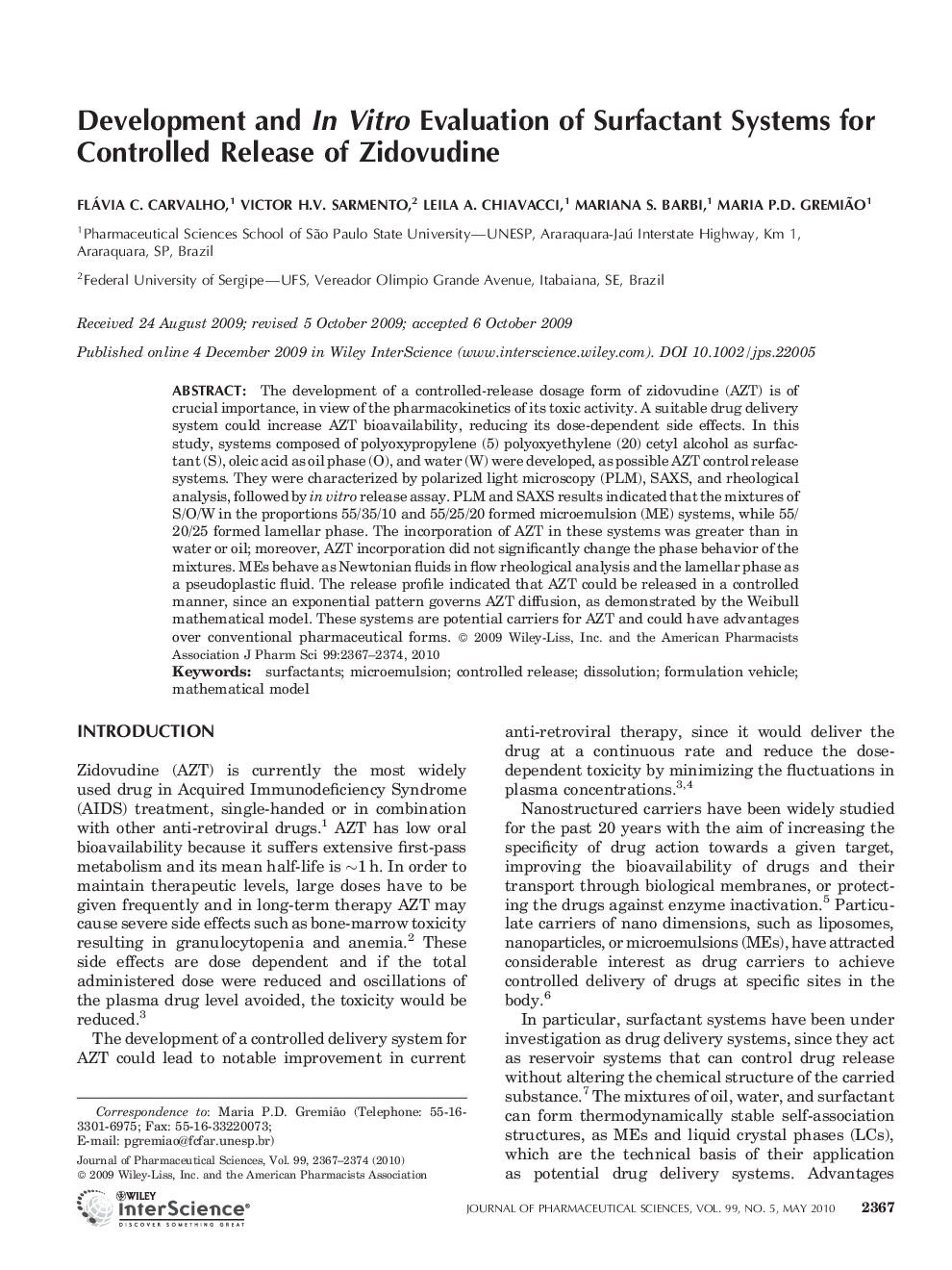| Article ID | Journal | Published Year | Pages | File Type |
|---|---|---|---|---|
| 2485906 | Journal of Pharmaceutical Sciences | 2010 | 8 Pages |
Abstract
The development of a controlledârelease dosage form of zidovudine (AZT) is of crucial importance, in view of the pharmacokinetics of its toxic activity. A suitable drug delivery system could increase AZT bioavailability, reducing its doseâdependent side effects. In this study, systems composed of polyoxypropylene (5) polyoxyethylene (20) cetyl alcohol as surfactant (S), oleic acid as oil phase (O), and water (W) were developed, as possible AZT control release systems. They were characterized by polarized light microscopy (PLM), SAXS, and rheological analysis, followed by in vitro release assay. PLM and SAXS results indicated that the mixtures of S/O/W in the proportions 55/35/10 and 55/25/20 formed microemulsion (ME) systems, while 55/20/25 formed lamellar phase. The incorporation of AZT in these systems was greater than in water or oil; moreover, AZT incorporation did not significantly change the phase behavior of the mixtures. MEs behave as Newtonian fluids in flow rheological analysis and the lamellar phase as a pseudoplastic fluid. The release profile indicated that AZT could be released in a controlled manner, since an exponential pattern governs AZT diffusion, as demonstrated by the Weibull mathematical model. These systems are potential carriers for AZT and could have advantages over conventional pharmaceutical forms. © 2009 WileyâLiss, Inc. and the American Pharmacists Association J Pharm Sci 99: 2367-2374, 2010
Related Topics
Health Sciences
Pharmacology, Toxicology and Pharmaceutical Science
Drug Discovery
Authors
Flávia C. Carvalho, Victor H.V. Sarmento, Leila A. Chiavacci, Mariana S. Barbi, Maria P.D. Gremião,
